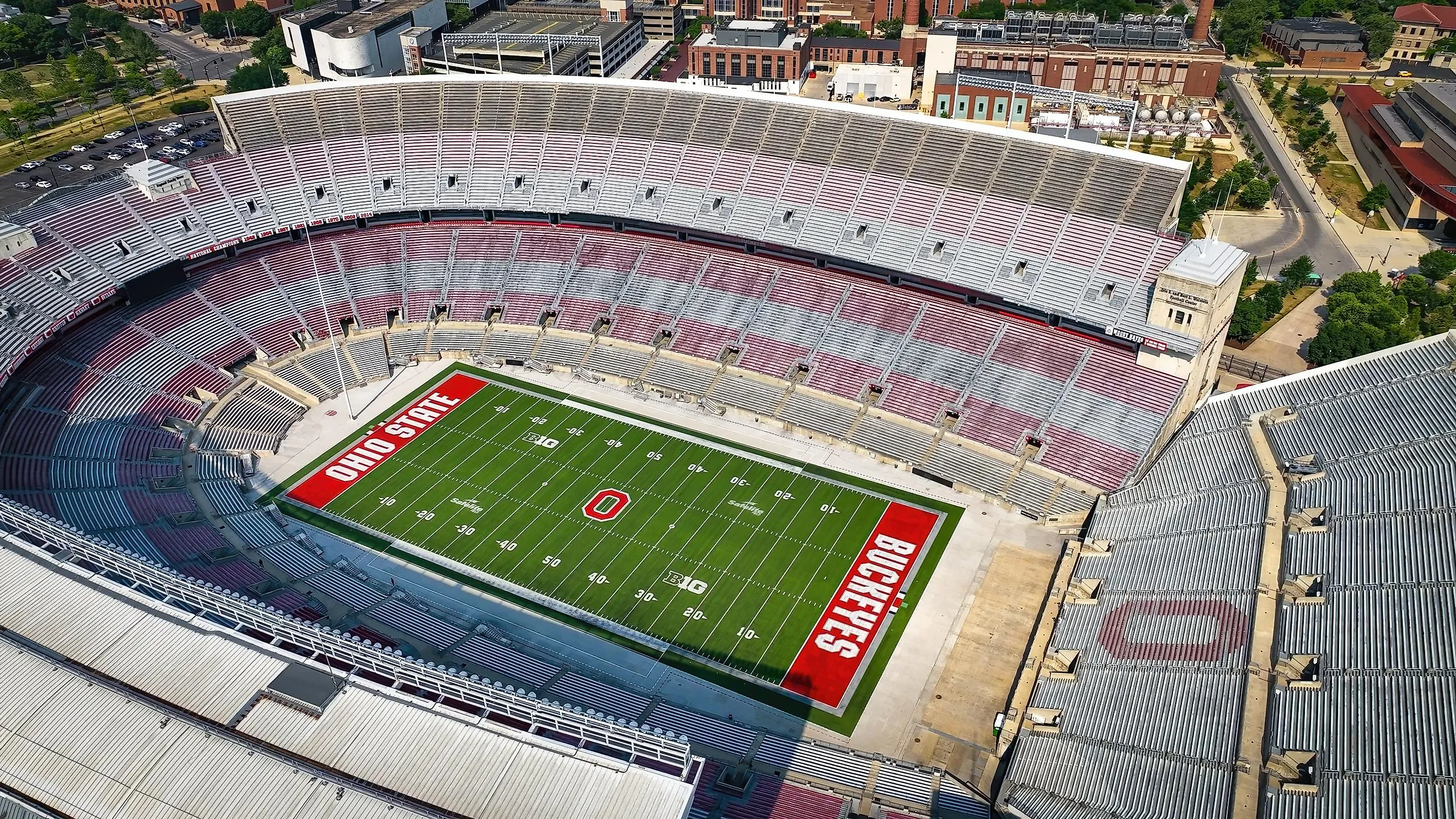
The Biggest Stadiums In The World
No matter where you go, you can see the profound impact sports have had on each nation. Both rich and poor, big and small, every country and city on Earth has its own stadium where its favorite game is played. Sports are much more than a simple game, of course; in many instances, they are major cultural events that have the undivided attention of millions of individuals. Sometimes, people's entire ethos and identity are formed around their most beloved sports team and organization. Every team and event needs a venue. While some of these stadiums are quaint and humble, others are astronomical in size. Costing hundreds of millions of dollars to make and often taking years to construct. The biggest stadiums in the world serve as shrines to the cultural phenomena that are sport and live entertainment.
1. Narendra Modi Stadium, India - Capacity: 132,000
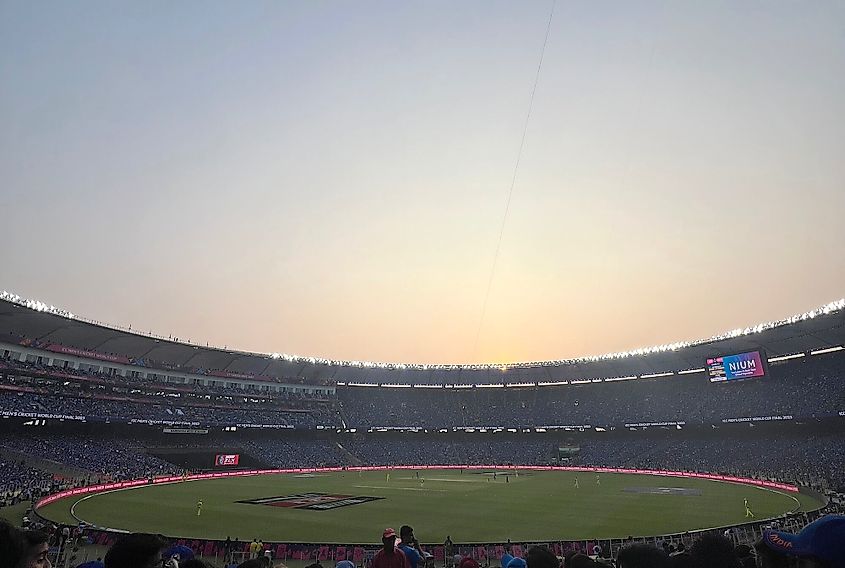
Located in Gujarat, a state found along India's western coast, the Narendra Modi Stadium is the largest in the world. Formerly known as the Sardar Patel Stadium, this previous arena was demolished to make room for the site of the Narendra Modi. The beloved stadium has over 132,000 seats and can accommodate crowds from all over the globe—making it one of the most popular destinations on the planet. When the arena is a full capacity it is truly a sight to behold.
Narendra Modi Stadium is almost exclusively used as a venue for cricket matches. Cricket has long been India's most popular sport ever since it was introduced by the British during colonial times. The Indian Premier League (IPL) continues to dominate in terms of fan support and television viewership in the nation.
2. Rungrado 1st Of May Stadium, North Korea - Capacity: 114,000
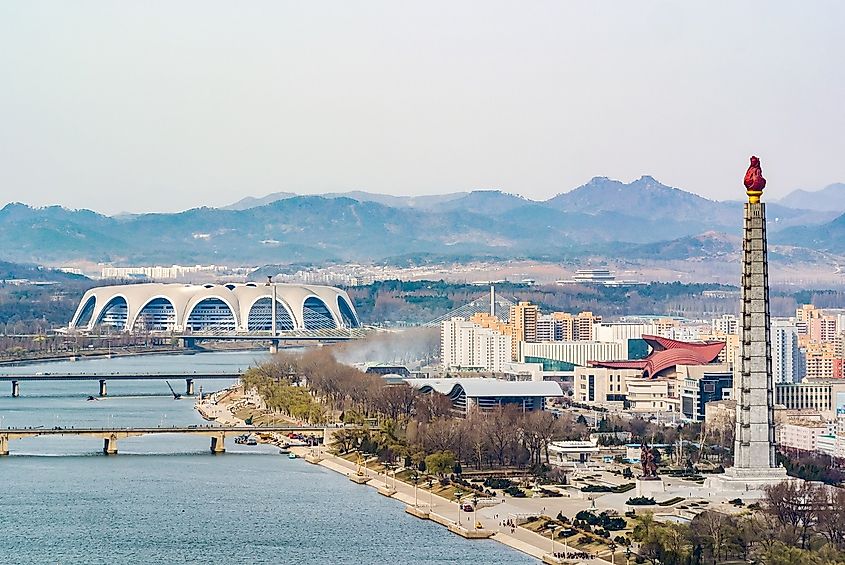
Surprising to many, the second-largest stadium in the world is located in North Korea, in its capital city of Pyongyang. This gigantic stadium was constructed in only one year and was done so in response to the success of its neighbor and rival, South Korea after they hosted the 1988 Olympic Games. The stadium was officially unveiled on May 1st, 1989.
Built to host both football games and other sporting events, this massive structure measures nearly 2,230,000 square feet across and is one of the most iconic symbols of North Korean culture and society. The roof that covers the entire structure, fashioned with 16 arches in total, makes it look like a giant magnolia from above. Due to the political isolation of North Korea, the stadium does not see tons of use on the international level aside from the odd quality match for the World Cup or other regional football tournaments. Hopefully, things can change one day and this beautiful stadium can be seen and used by more athletes.
3. Michigan Stadium, Michigan - Capacity: 107,601
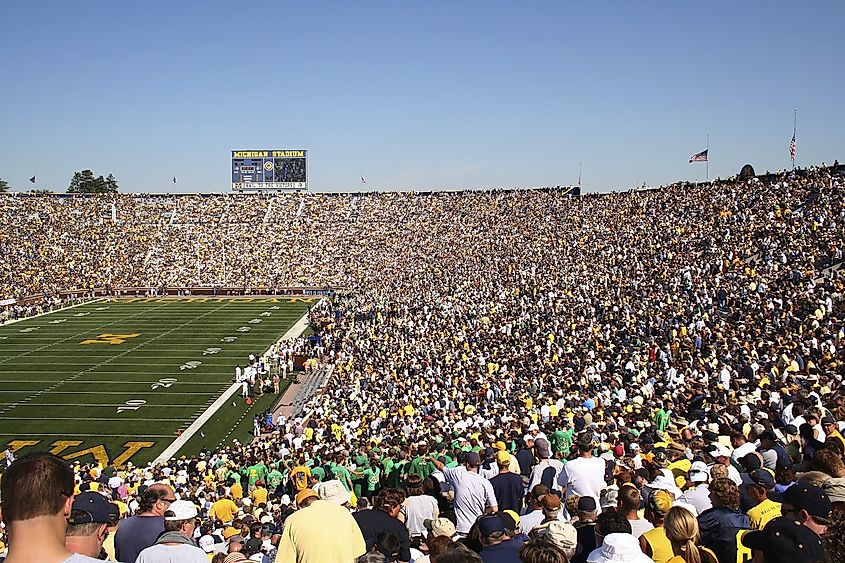
Michigan Stadium, also known as "The Big House", is one of the largest and most iconic stadiums in the world. With a seating capacity of over 100,000 people, it is the home field for the Michigan Wolverines football team. Built back in 1927, the stadium has evolved over the years to keep up with changing trends and technology. The stadium is still regularly receiving new additions to its already impressive array of amenities.
What really sets this stadium apart from others is its incredible acoustics and overall design. When the nearly 110,000 fans roar after each touchdown or successful drive, the sound is like nothing else. This only adds to the otherworldly atmosphere that Michigan Stadium is known to provide. American football is not the only sport that is played here. Traditional football matches are seen here on occasion and in 2014 the National Hockey League (NHL) hosted the world's largest recorded outdoor hockey game.
4. Beaver Stadium, Pennsylvania - Capacity: 106,572
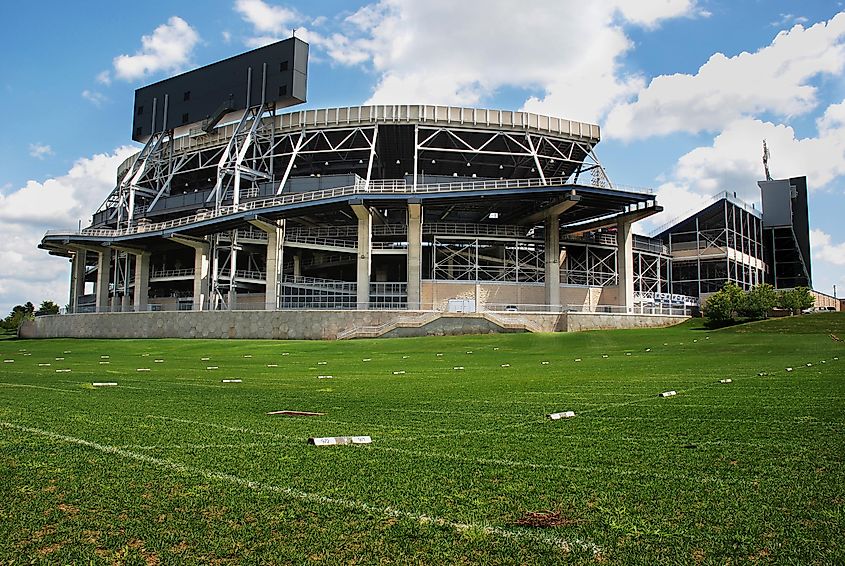
With a seating capacity of over 106,000 people, Beaver Stadium is the second largest stadium in the US and is a truly awe-inspiring sight to behold. Featuring state-of-the-art facilities, this stadium is the perfect place for football fans to cheer on their favorite teams. Beaver Stadium was built with American college football in mind. Just about every inch of the stadium is covered head to toe with Penn State iconography and merchandise. Each year more than a million people visit the area to join in on the spectacle of watching a game here.
Beaver Stadium, despite being one of the largest in the world has quite humble beginnings. It was first named Beaver Field in the later 19th century and only had a seating capacity of 500. As American football rose in popularity, the actual stadium was built on top of the field and has seen a steady flow of new additions and renovations ever since.
5. Ohio Stadium, Ohio - Capacity: 102,780
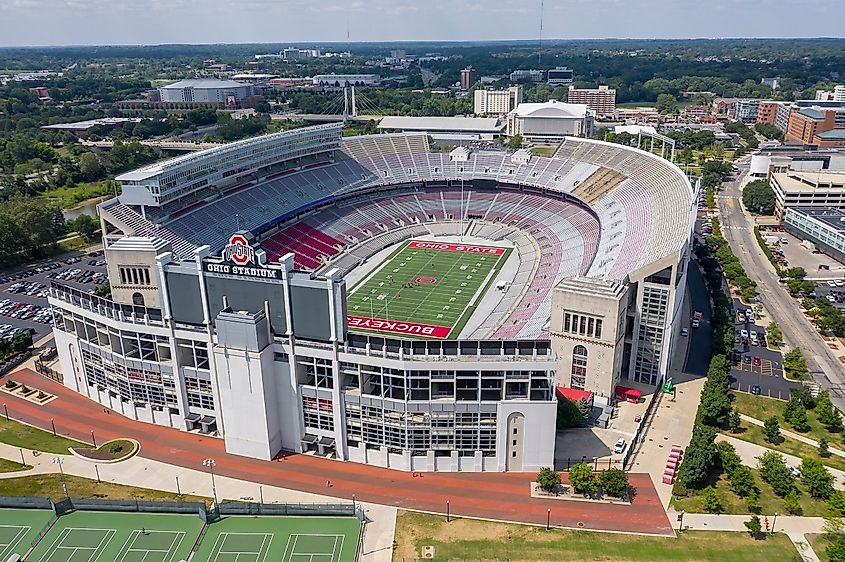
Ohio Stadium in Columbus, Ohio, also known as the “Horseshoe” and the “Shoe,” is one of the biggest and most famous stadiums in the US. With a seating capacity of over 102,000 spectators, this iconic structure is home to the Ohio State Buckeyes football team and has been hosting games since 1922. This stadium is not exclusively used for football. A fair share of world-renowned musicians have held enormous concerts here such as Metallica and U2. Even some politicians have held rallies in this area over the years. Ohio Stadium is probably one of the best-looking and well-kept arenas on this list. The stadium is near and dear to many people's hearts, and the stellar appearance and relative cleanliness found here is certainly not what most people would expect.
6. Kyle Field, Texas - Capacity: 102,733
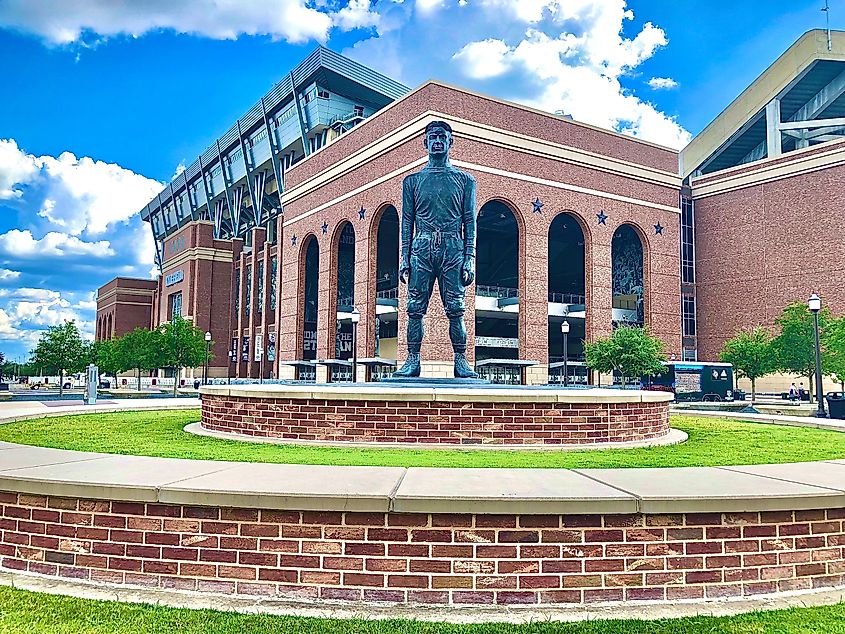
Kyle Field, located in College Station, Texas, is one of the most popular stadiums in the world, bringing in millions of spectators each year. In addition to its capacity, another key feature of Kyle Field is its high-tech facilities, such as the massive Jumbotron. With luxury suites, VIP lounges, and modern concessions areas, it offers the kind of amenities that you would normally only find in a five-star hotel.
Of course, one of the biggest draws for sports fans is undoubtedly the history behind their favorite teams and stadiums. And with almost 100 years of history under its belt, there is a lot to be proud of at Kyle Field. From celebrated moments and memorable games to star players, coaches, and even bands—all of whom have left their mark on the stadium's legacy—there is plenty for fans to enjoy and remember when they visit this landmark.
7. Tiger Stadium, Louisiana - Capacity: 102,321

Located in Baton Rouge, Louisiana, Tiger Stadium's loud and raucous atmosphere makes for a truly thrilling place to watch a game. The American South is known for being home to some of the most diehard football fans on the planet and nowhere is this more apparent than at Tiger Stadium.
The history of Tiger Stadium goes back nearly 100 years when it was originally built in 1924. At that time, it only seated around 12,000 people. Over the years, however, it has expanded significantly to accommodate more fans. Today, it seats over 102,000 people, making it one of the biggest and most impressive sports stadiums in the world. The local fanbase, known as "The Fighting Tigers", are among some of the most passionate and enthusiastic of all college football fans, making the stadium one of the liveliest places to watch a game.
8. Neyland Stadium, Tennessee - Capacity: 101,915
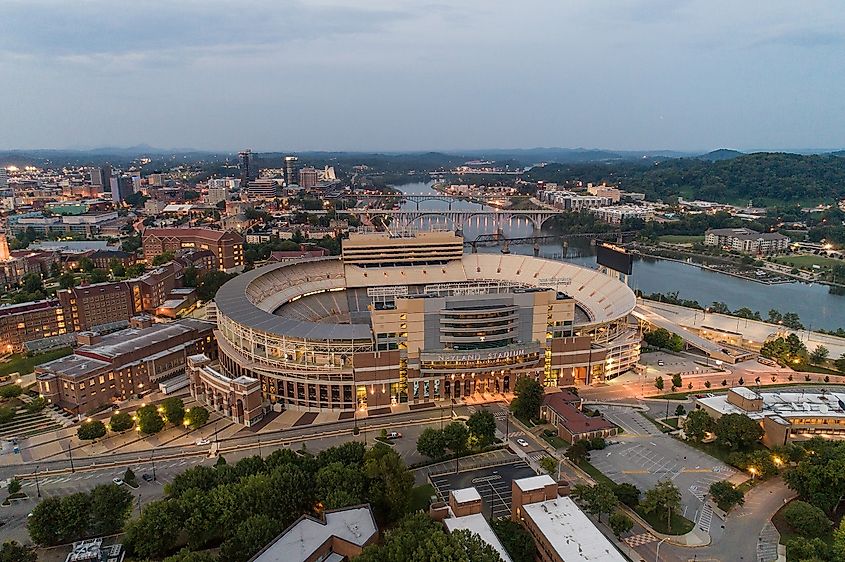
Neyland Stadium is the sixth-largest stadium in North America and the eighth-largest stadium in the world. Constructed in 1921 and named after Robert Neyland, who served as head coach at Tennessee from 1926 to 1952, this stadium has a seating capacity of over 101,000. The exterior of Neyland Stadium is an imposing sight—it is a huge oval structure with towering pillars that support its steeply sloped roof. The entrance to the stadium features gigantic doors flanked by colossal stone columns, making it clear that you are about to enter something special. Once inside, you will find yourself standing on a field surrounded by some of the most passionate sports fans in the world. Football is not the only thing that you can see at Neyland Stadium. Concerts and even monster truck rallies have been held here. The arena is so large that it has even hosted baseball games on occasion.
9. Darrell K Royal-Texas Memorial Stadium, Texas - Capacity: 100,119
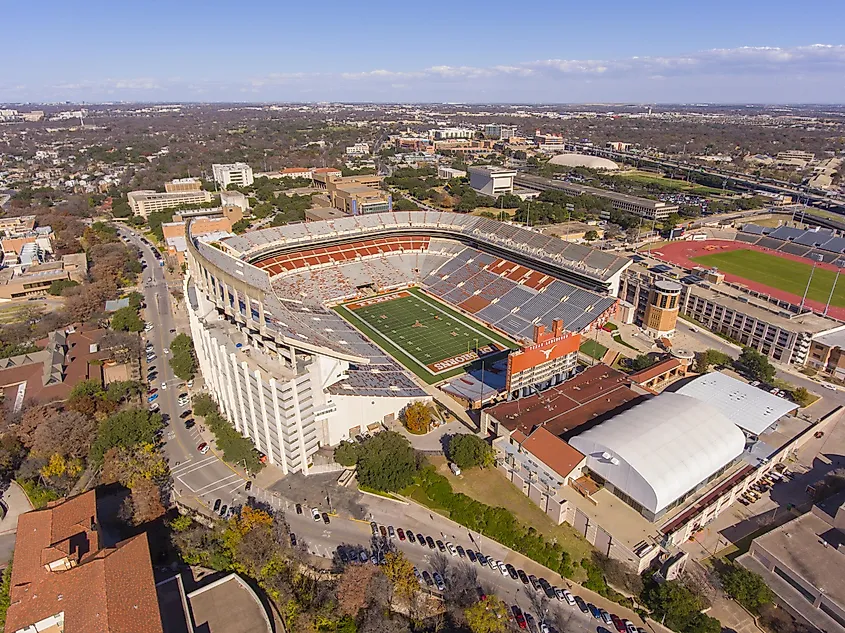
Built in 1924, Darrell K Royal-Texas Memorial Stadium has undergone several renovations over the years to keep up with changing times. The latest renovation, completed in 2017, included upgrades to the weight rooms, locker rooms, and meeting rooms. This stadium is home to the University of Texas football team and has been a fixture in the community for many years.
A long and celebrated legacy has been built at this arena over the years. Fans who want to take a trip down memory lane can walk through the stadium's various museums that are dedicated to the local team. This includes a trophy room dedicated to Darrell K Royal, the former head coach of the Longhorns football team. Texas is similar to its other southern counterparts in terms of passion and dedication to their team. The atmosphere and energy at the games at Darrell K Royal-Texas Memorial Stadium are hard to match.
10. Bryant-Denny Stadium, Alabama - Capacity: 100,077
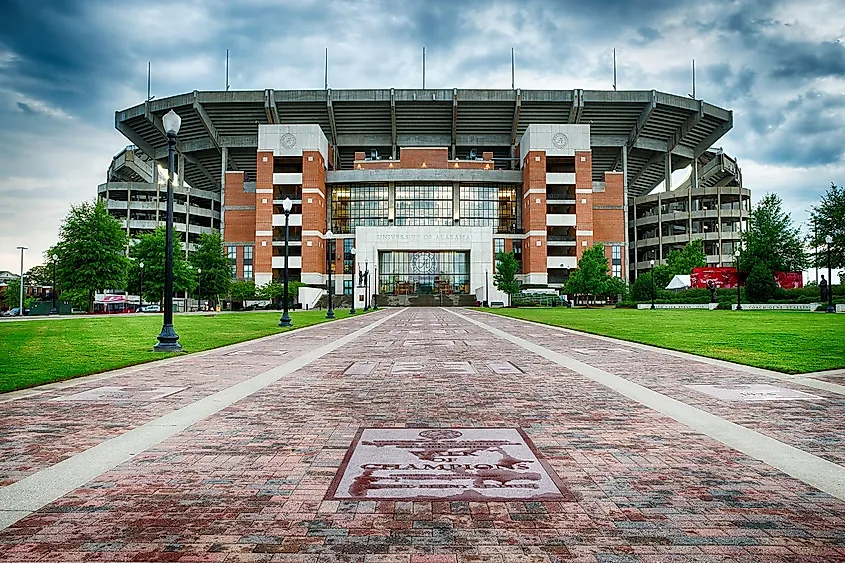
Built back in 1929, with a seating capacity of just under 101,000, Bryant-Denny is the largest stadium in the state of Alabama. This prominent stadium, named after two great figures in Alabama football: George H. Denny, who served as university president, and Paul W. Bryant, head coach, has played host to some of the greatest games ever played. It has been a part of Alabama football history for almost 100 years.
Over the years, Bryant-Denny has hosted some truly epic football matches—including NCAA national championship games and several bowl games. It has also played host to several major concerts and other events, including the Southeastern Conference (SEC) Championship football game. Alabama college football is arguably one of the proudest and most storied of any American state. College football is so deeply ingrained into the local culture that whenever the Alabama Crimson Tide takes the field, the entire state stands still and gives its team its undivided attention.
| Rank | Stadium | Capacity | Location |
|---|---|---|---|
| 1 | Narendra Modi Stadium | 132,000 | Ahmedabad, Gujarat |
| 2 | Rungrado 1st of May Stadium | 114,000 | Pyongyang |
| 3 | Michigan Stadium | 107,601 | Ann Arbor, Michigan |
| 4 | Beaver Stadium | 106,572 | State College, Pennsylvania |
| 5 | Ohio Stadium | 102,780 | Columbus, Ohio |
| 6 | Kyle Field | 102,733 | College Station, Texas |
| 7 | Tiger Stadium | 102,321 | Baton Rouge, Louisiana |
| 8 | Neyland Stadium | 101,915 | Knoxville, Tennessee |
| 9 | Darrell K Royal-Texas Memorial Stadium | 100,119 | Austin, Texas |
| 10 | Bryant-Denny Stadium | 100,077 | Tuscaloosa, Alabama |
| 11 | Melbourne Cricket Ground | 100,024 | Melbourne, Victoria |
| 12 | Camp Nou | 99,354 | Barcelona |
| 13 | FNB Stadium | 94,736 | Johannesburg |
| 14 | Sanford Stadium | 92,746 | Athens, Georgia |
| 15 | Cotton Bowl Stadium | 92,100 | Dallas, Texas |
| 16 | Rose Bowl | 90,888 | Pasadena, California |
| 17 | Wembley Stadium | 90,000 | London |
| 18 | Ben Hill Griffin Stadium | 88,548 | Gainesville, Florida |
| 19 | Jordan-Hare Stadium | 87,451 | Auburn, Alabama |
| 20 | Bukit Jalil National Stadium | 87,411 | Kuala Lumpur |
| 21 | Estadio Azteca | 87,000 | Mexico City |
| 22 | Gaylord Family Oklahoma Memorial Stadium | 86,112 | Norman, Oklahoma |
| 23 | Memorial Stadium | 86,047 | Lincoln, Nebraska |
| 24 | Borg El Arab Stadium | 86,000 | Alexandria |
| 25 | Salt Lake Stadium | 85,000 | Kolkata |
| 26 | Stadium Australia | 83,500 | Sydney |
| 27 | MetLife Stadium | 82,500 | East Rutherford, New Jersey |
| 28 | Croke Park | 82,300 | Dublin |
| 29 | FedExField | 82,000 | Landover, Maryland |
| 30 | Jakarta International Stadium | 82,000 | Jakarta |
| 31 | Twickenham Stadium | 82,000 | London |
| 32 | Memorial Stadium | 81,500 | Clemson, South Carolina |
| 33 | Lambeau Field | 81,441 | Green Bay, Wisconsin |
| 34 | Stade de France | 81,338 | Saint-Denis |
| 35 | Estadio Santiago Bernabéu | 81,044 | Madrid |
| 36 | Luzhniki Stadium | 78,069 | Moscow |
| 37 | Shah Alam Stadium | 80,372 | Shah Alam |
| 38 | Camp Randall Stadium | 80,321 | Madison, Wisconsin |
| 39 | Estadio Monumental | 80,093 | Lima |
| 40 | Guangdong Olympic Stadium | 80,012 | Guangzhou, Guangdong |
| 41 | Eden Gardens | 80,000 | Kolkata |
| 42 | AT&T Stadium | 80,000 | Arlington, Texas |
| 43 | Beijing National Stadium | 80,000 | Beijing |
| 44 | Stade 5 Juillet 1962 | 80,000 | Algiers |
| 45 | Stade des Martyrs | 80,000 | Kinshasa |
| 46 | National Stadium | 80,000 | Tokyo |
| 47 | Hangzhou Sports Park | 80,000 | Hangzhou |
| 48 | Doak Campbell Stadium | 79,560 | Tallahassee, Florida |
| 49 | Estádio do Maracanã | 78,838 | Rio de Janeiro |
| 50 | Azadi Stadium | 78,116 | Tehran |
Not only is the sheer size of these stadiums impressive, but the cultural impact and legacy that they have left and continue to forge is nothing short of amazing. Sports has often been celebrated as being one of the few things on the planet that can bring people together. And when you see more than 100,000 people standing side by side rooting and cheering for their team, it is hard to argue against it.











